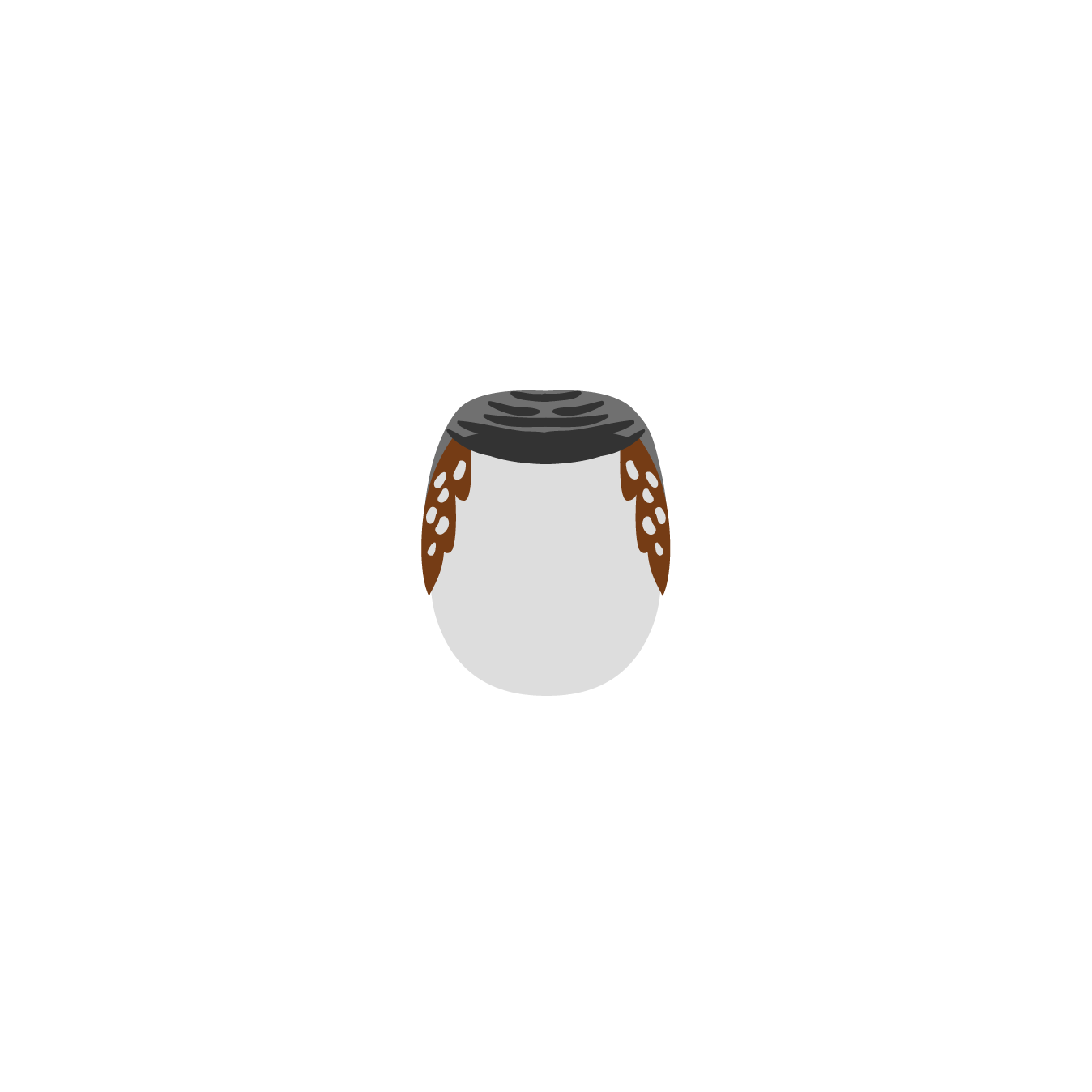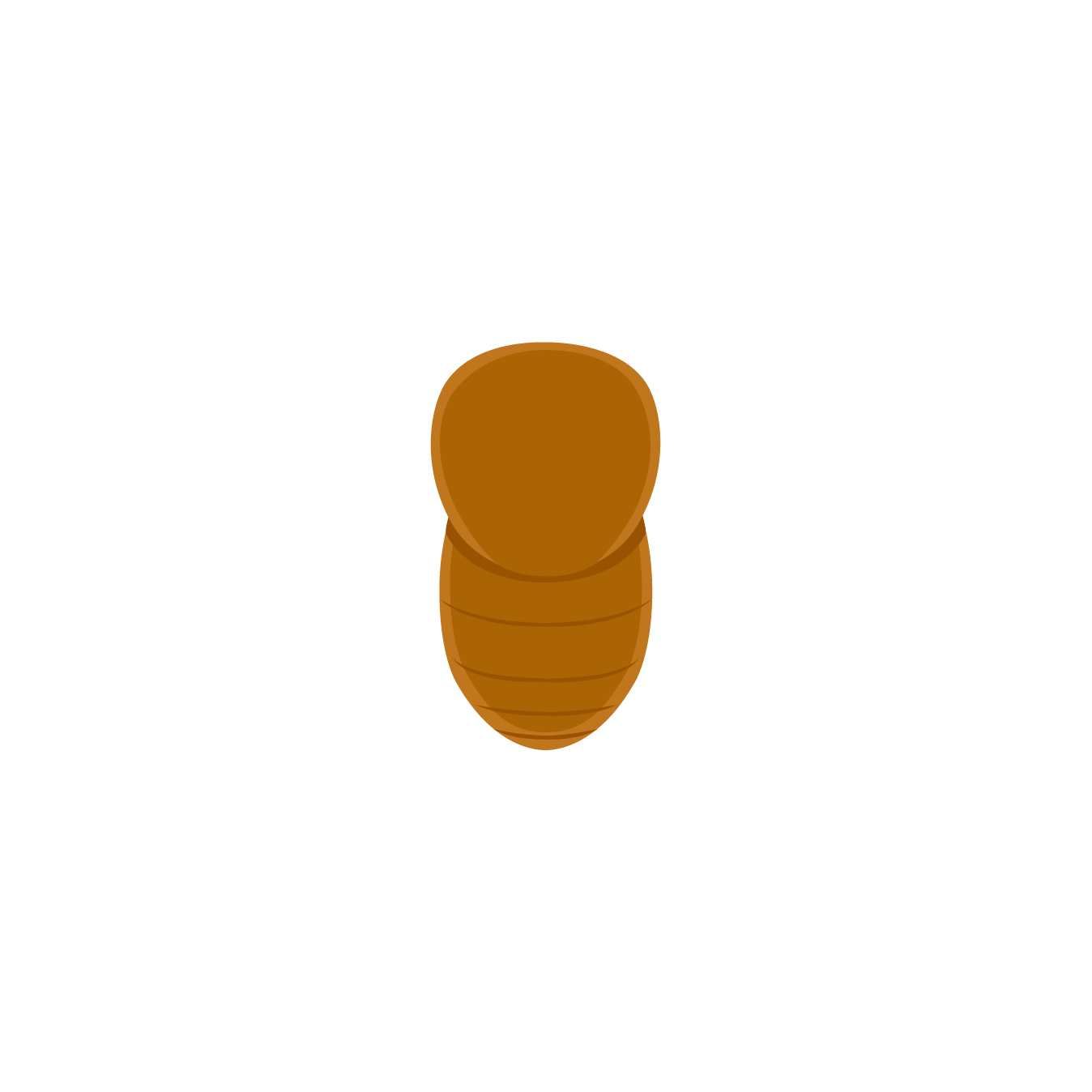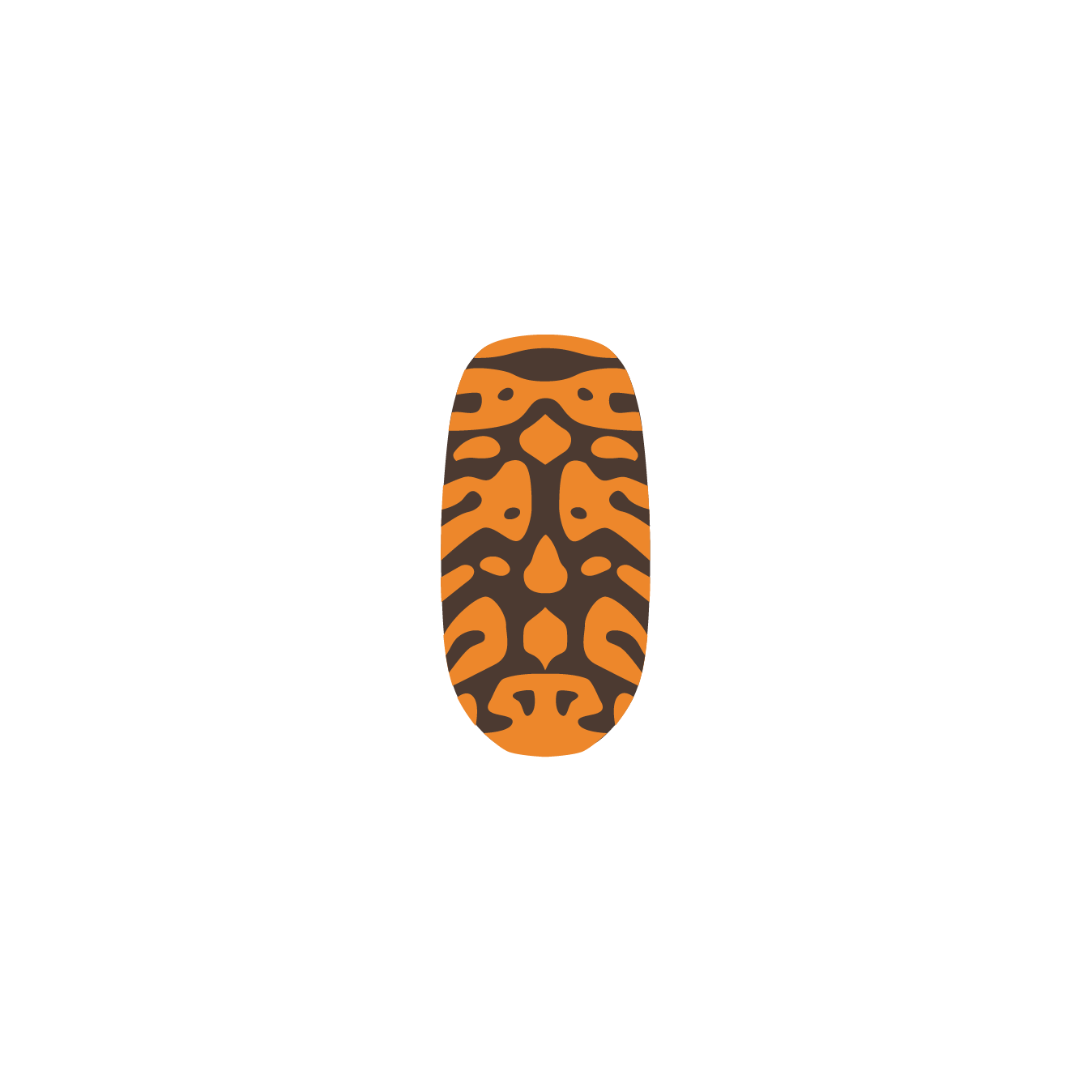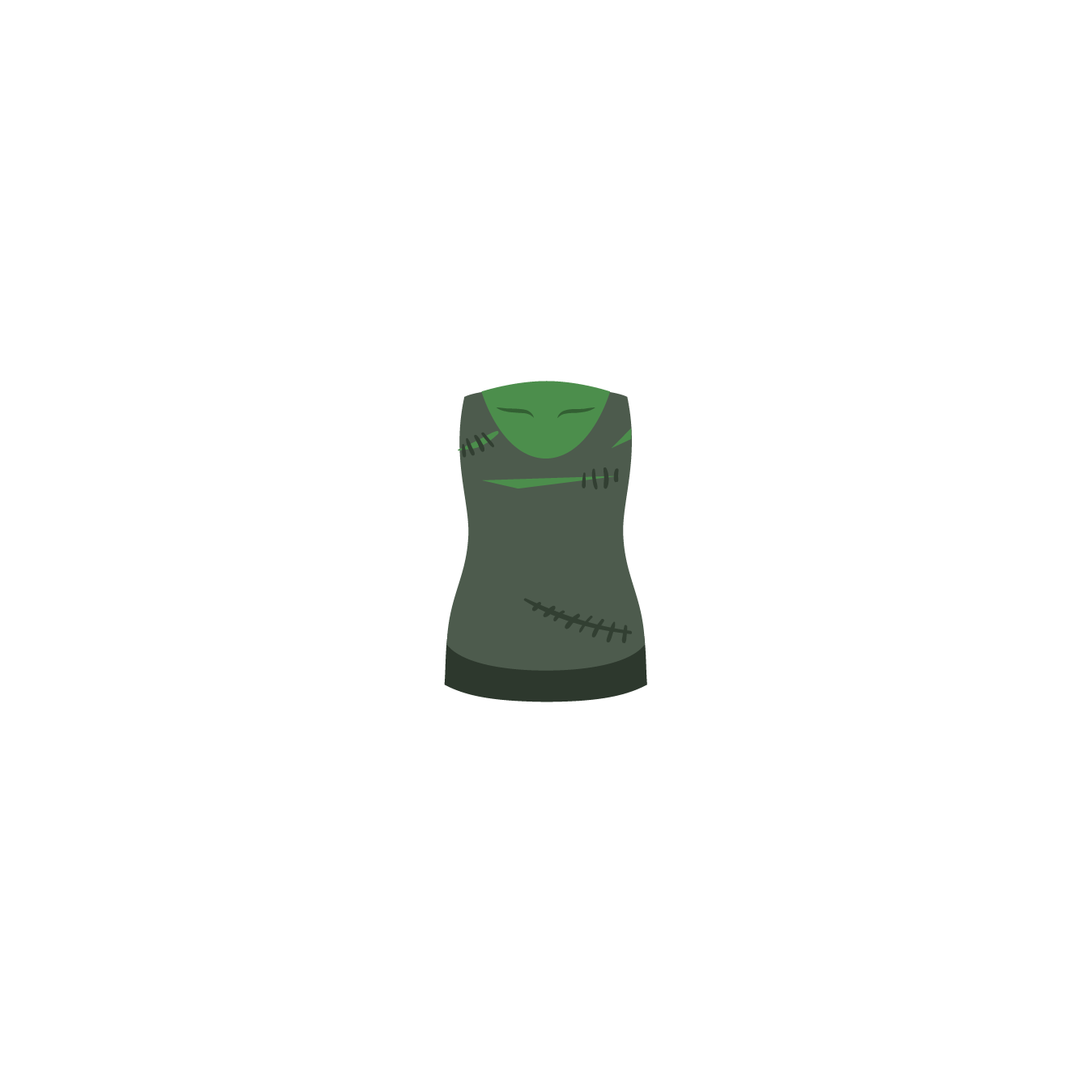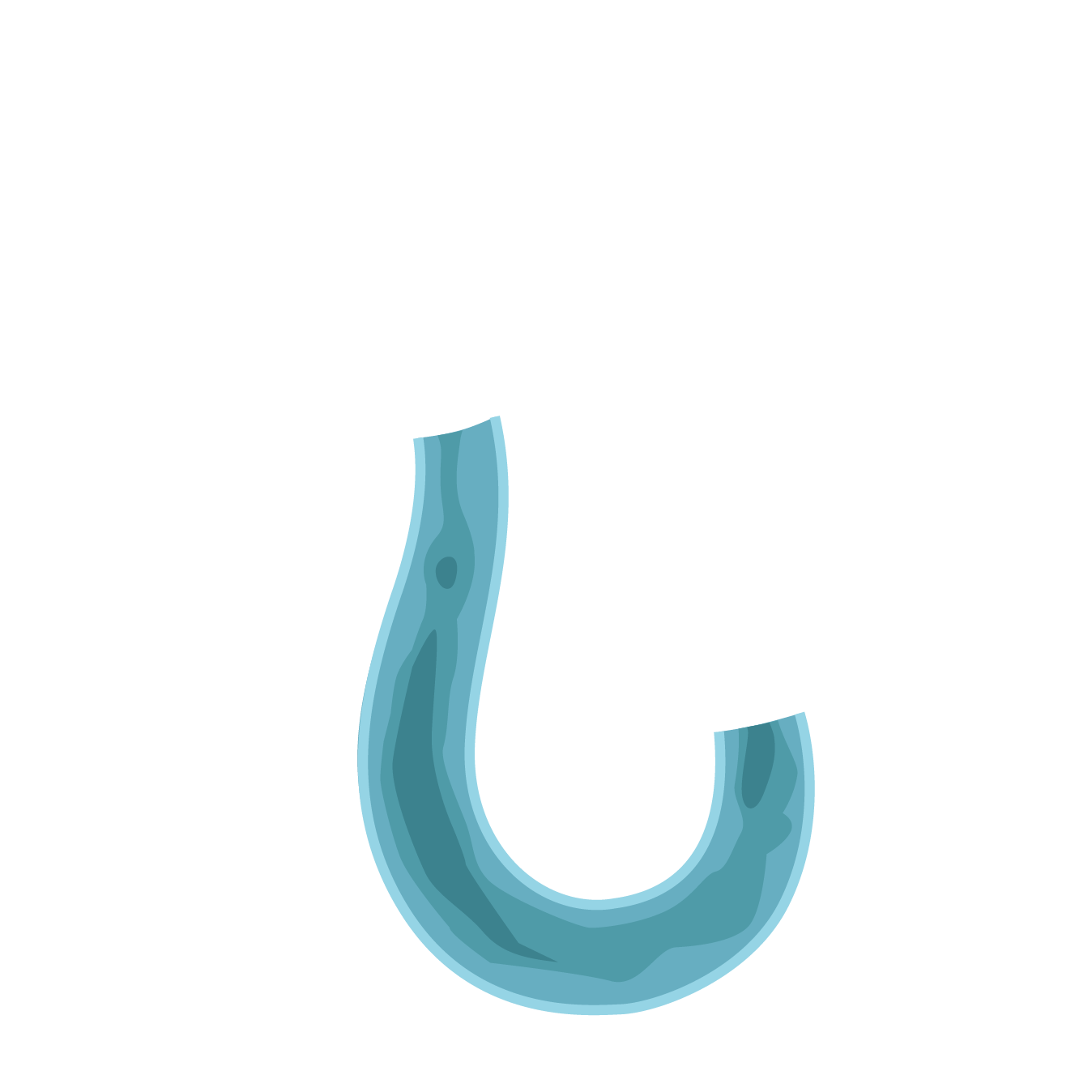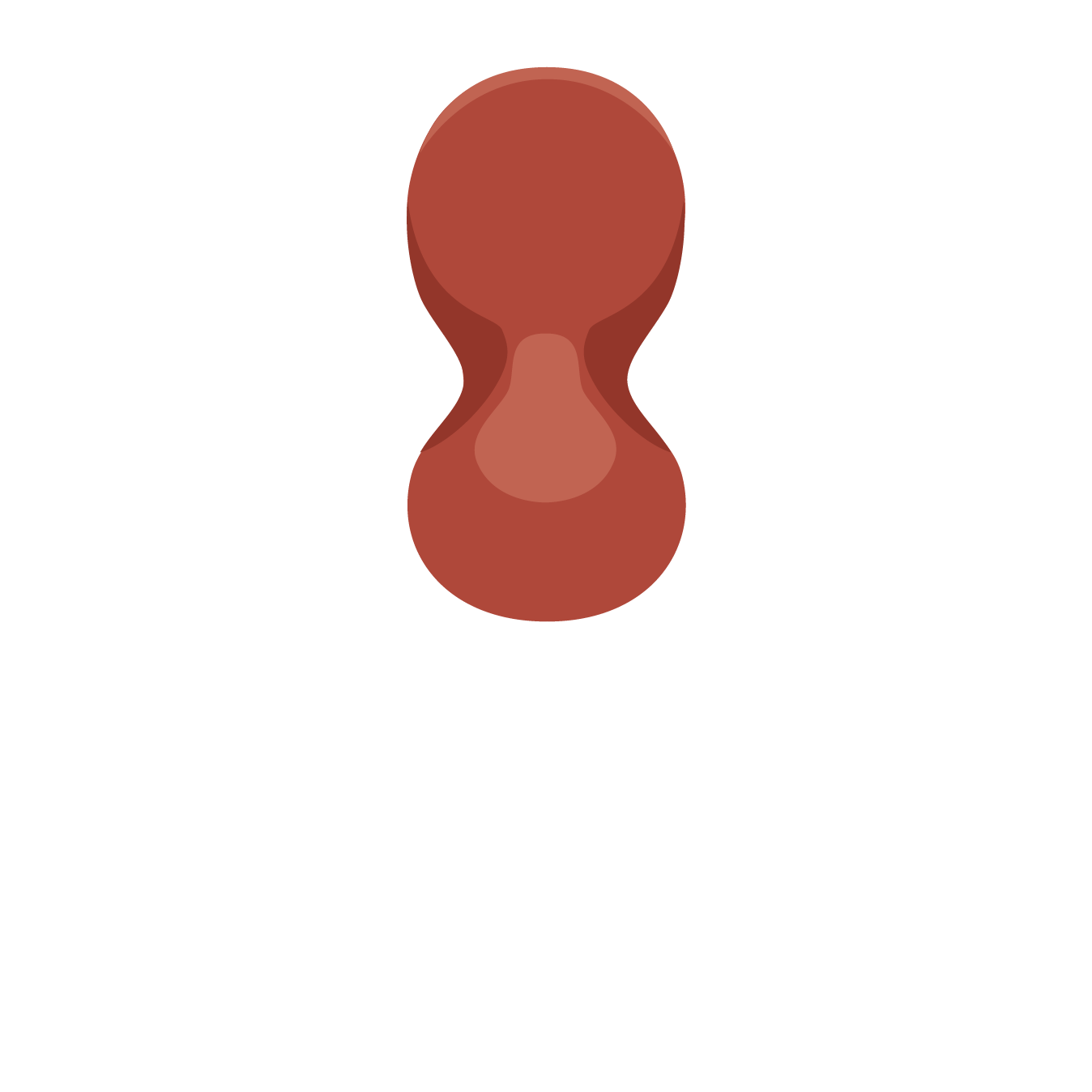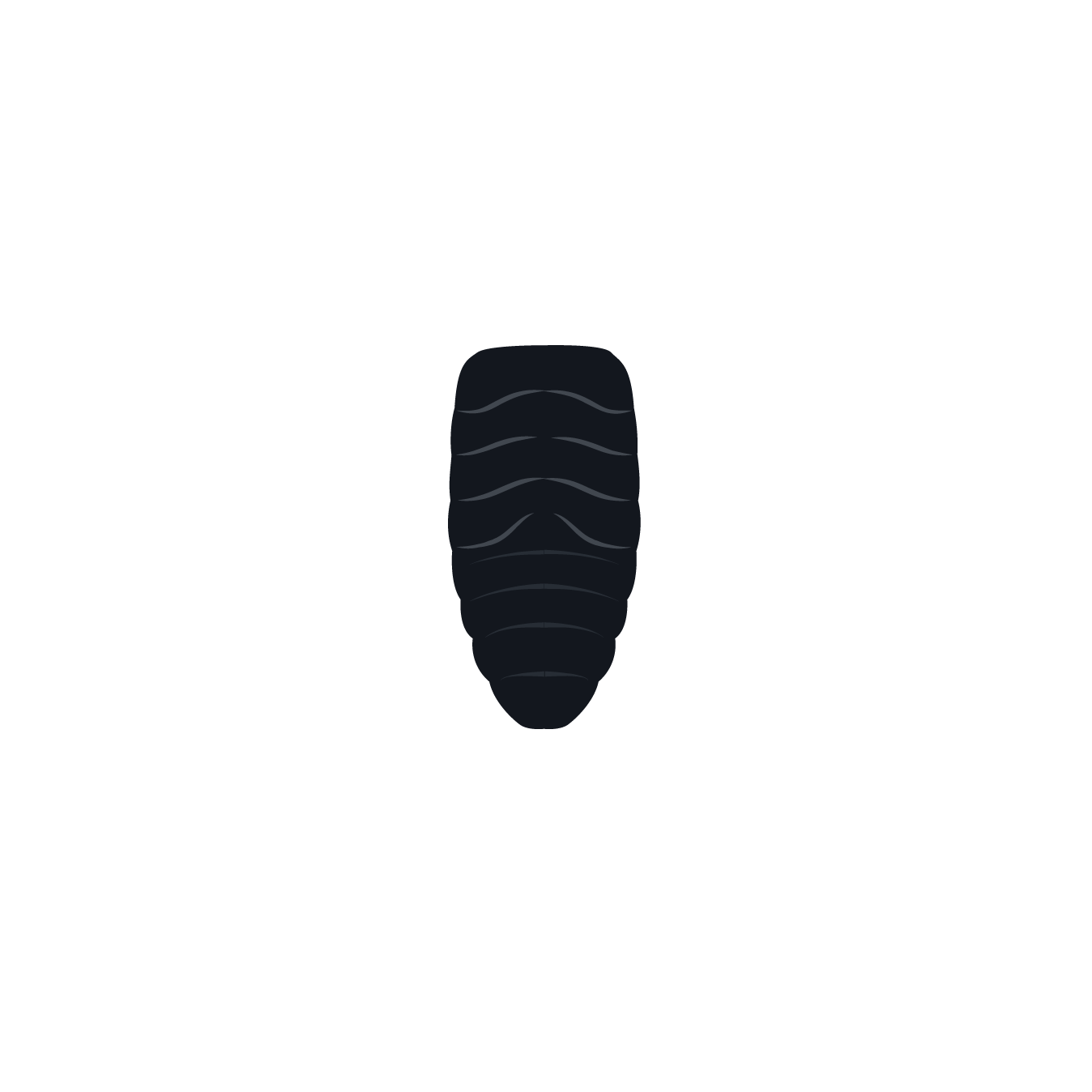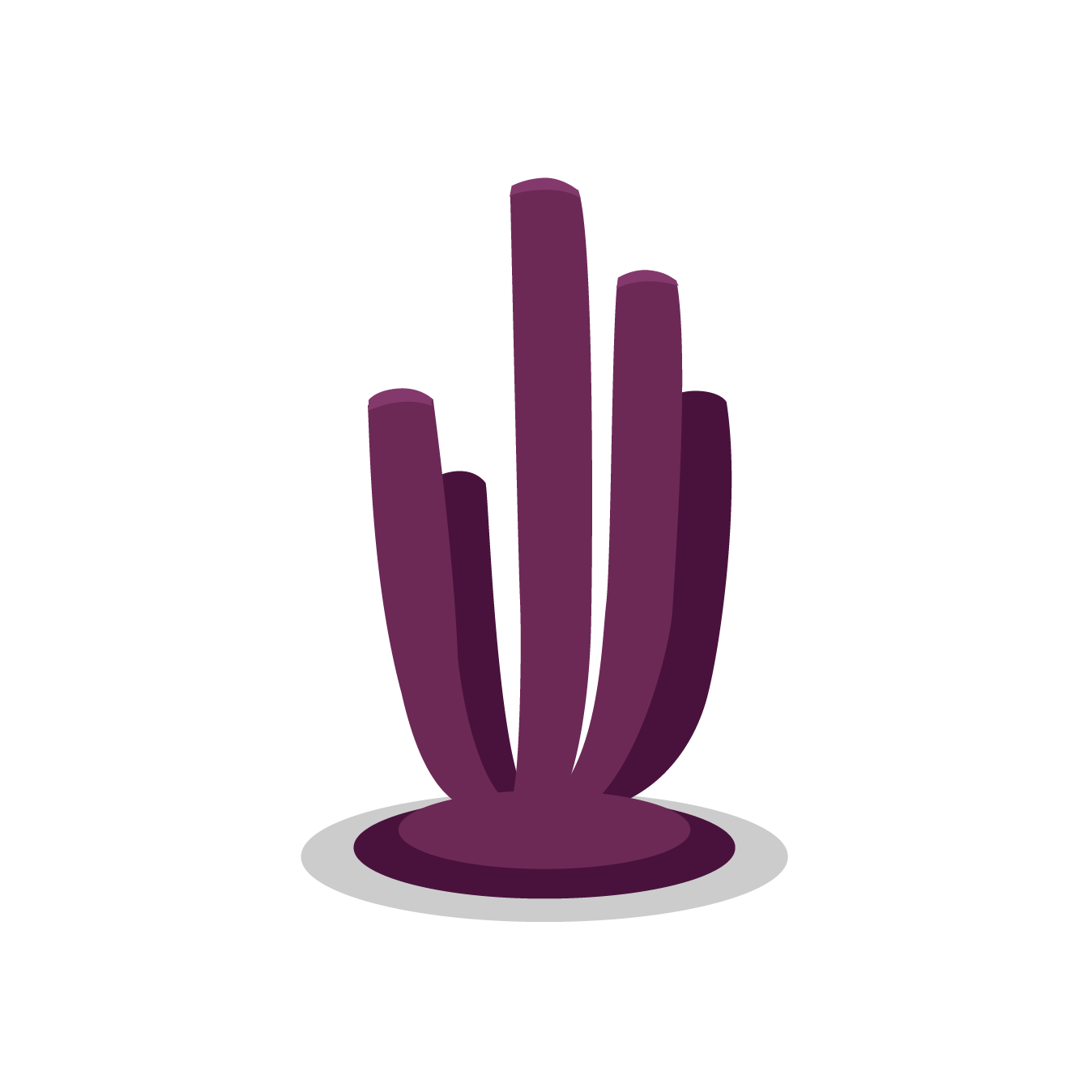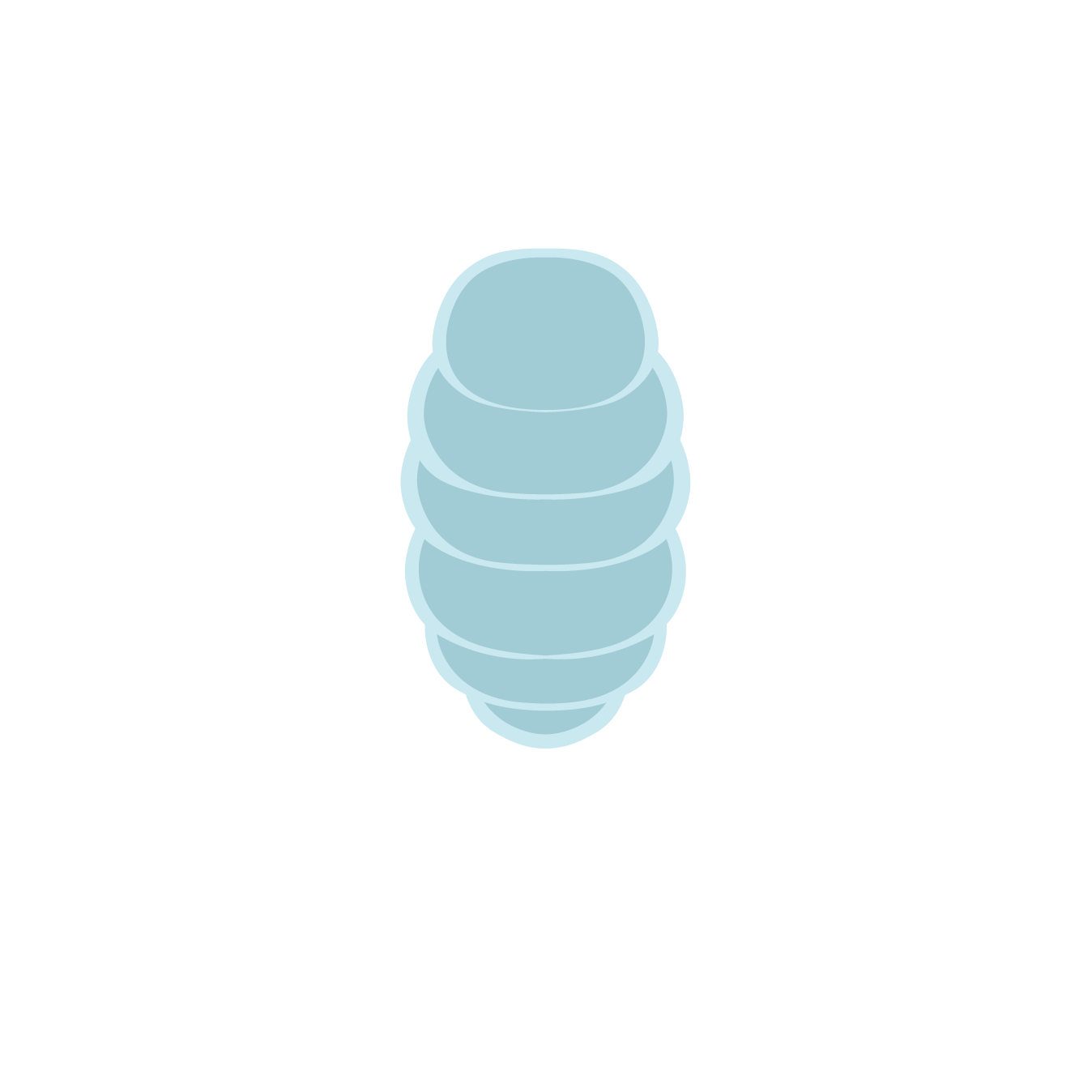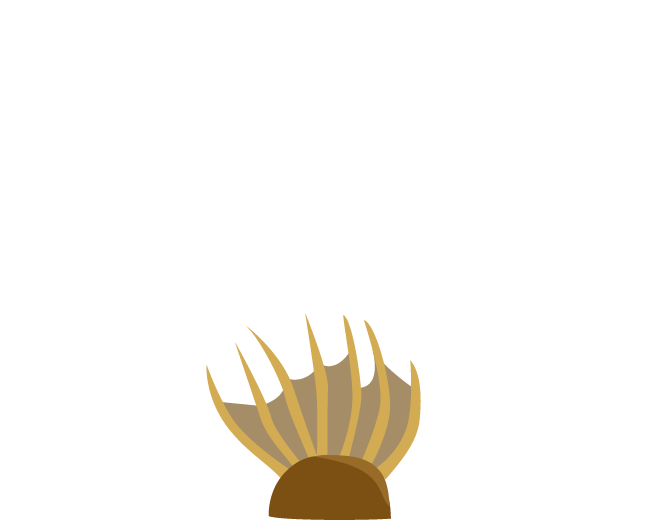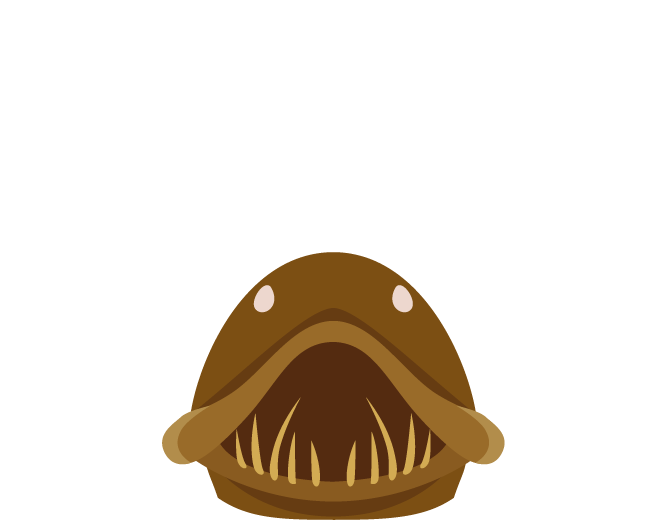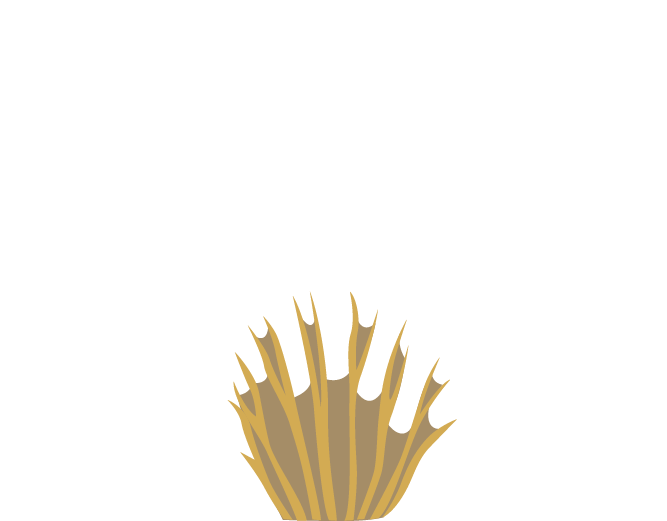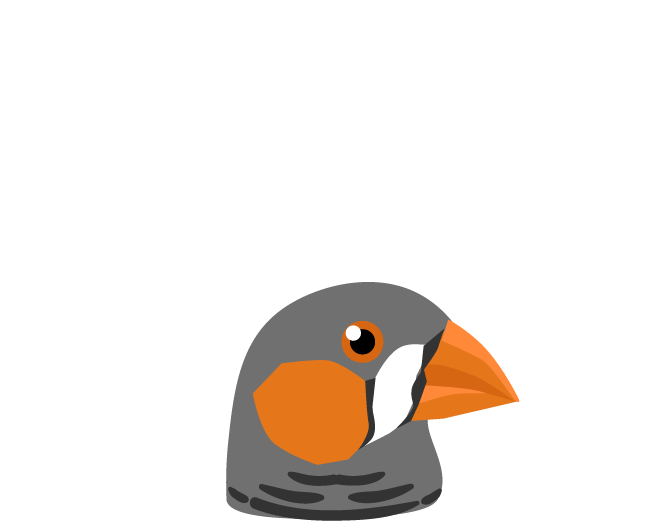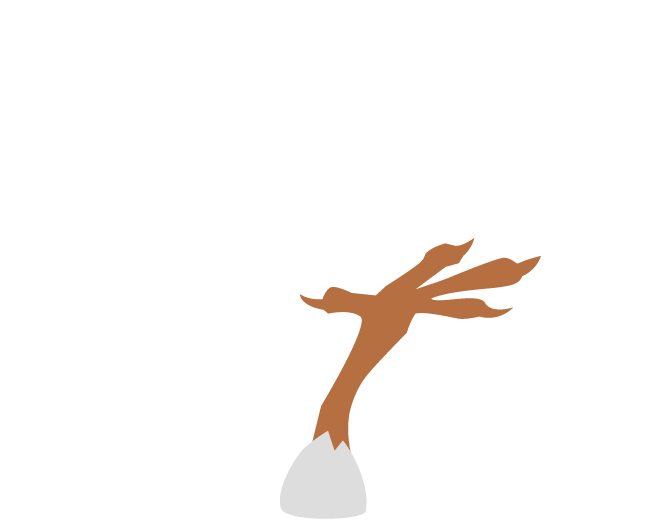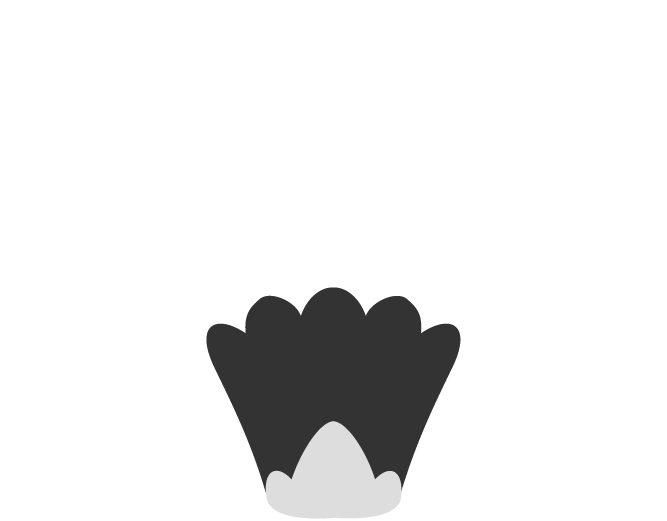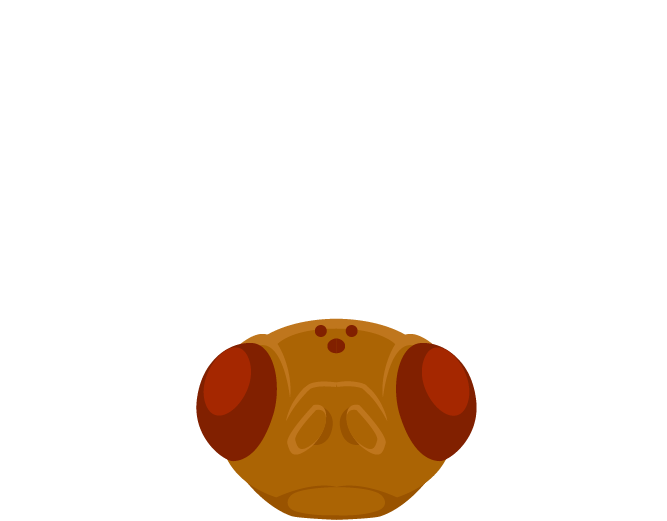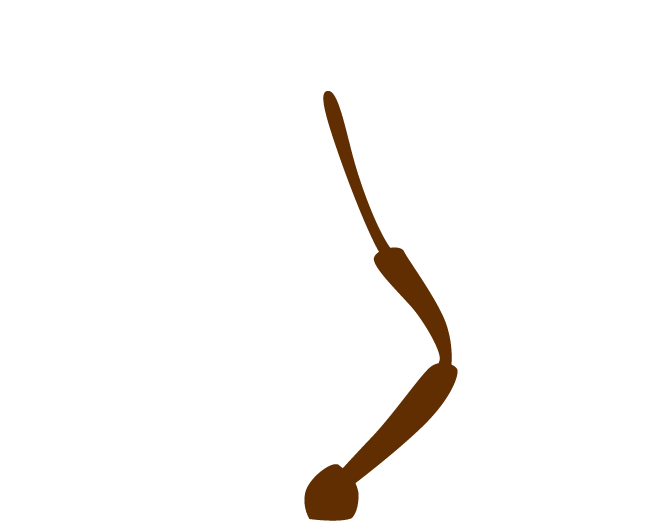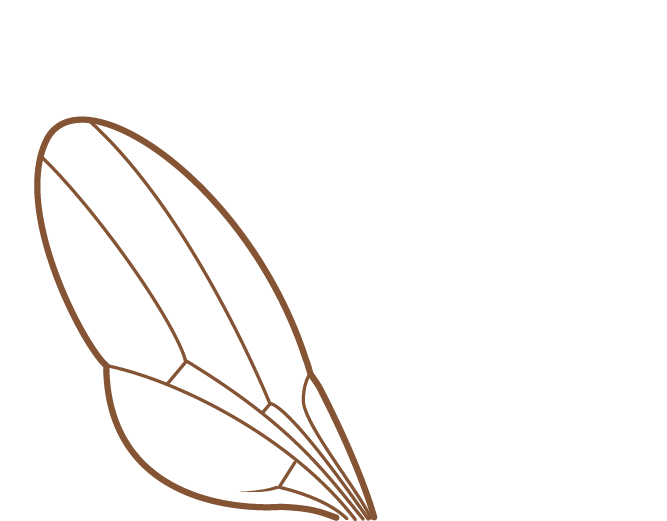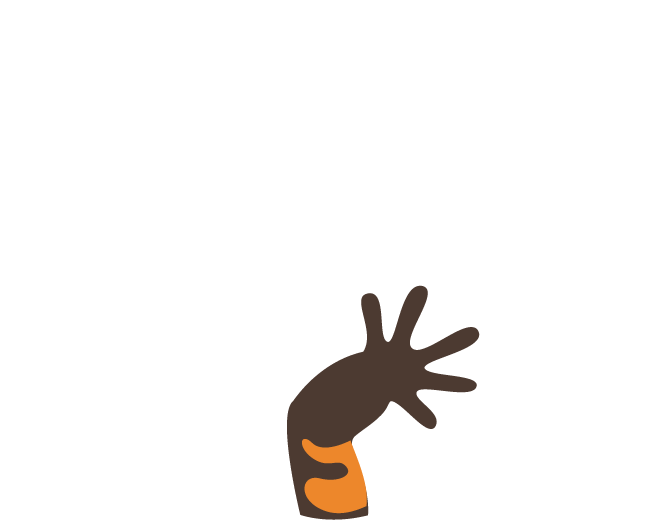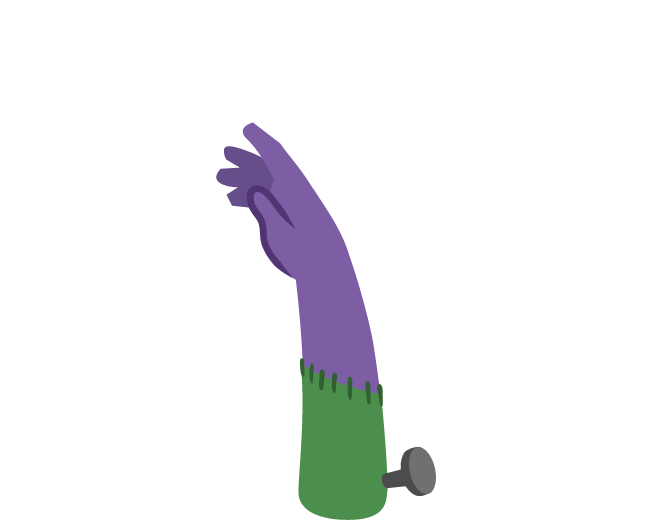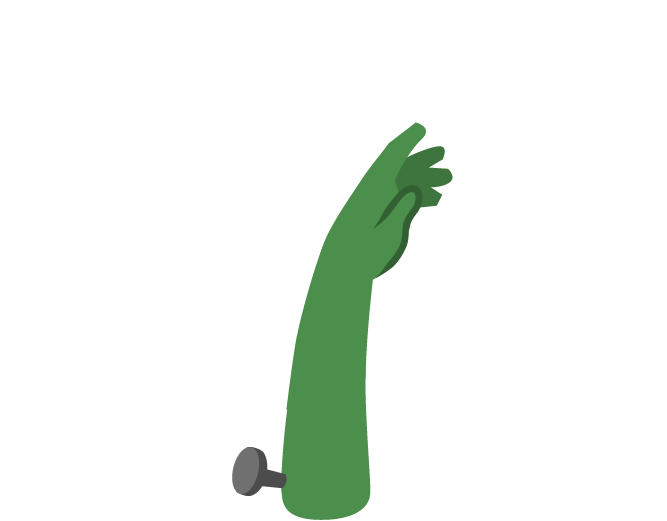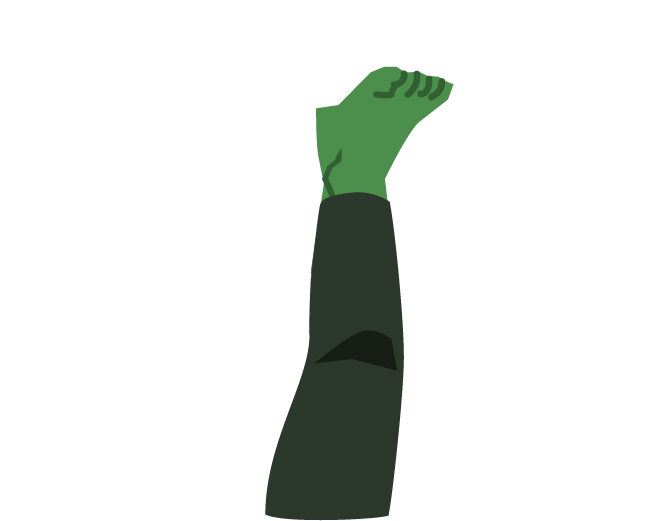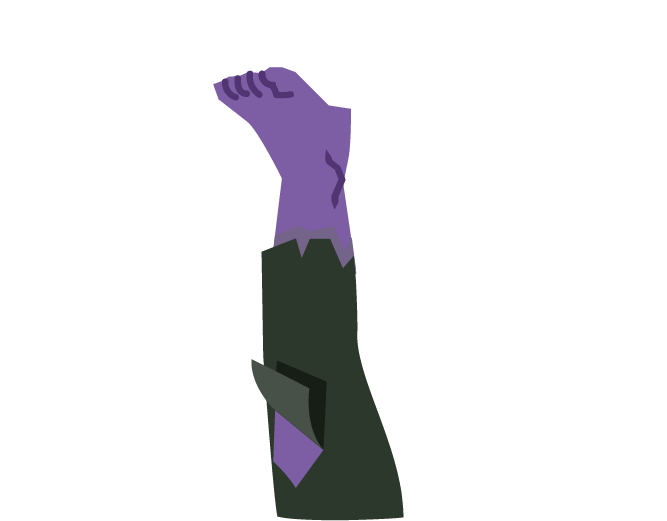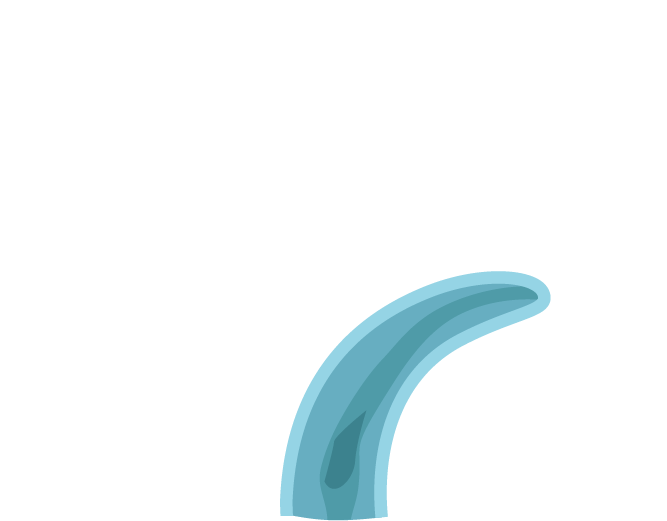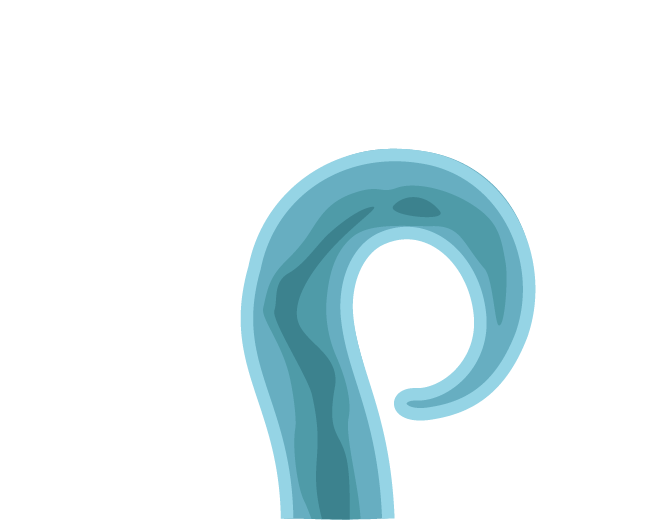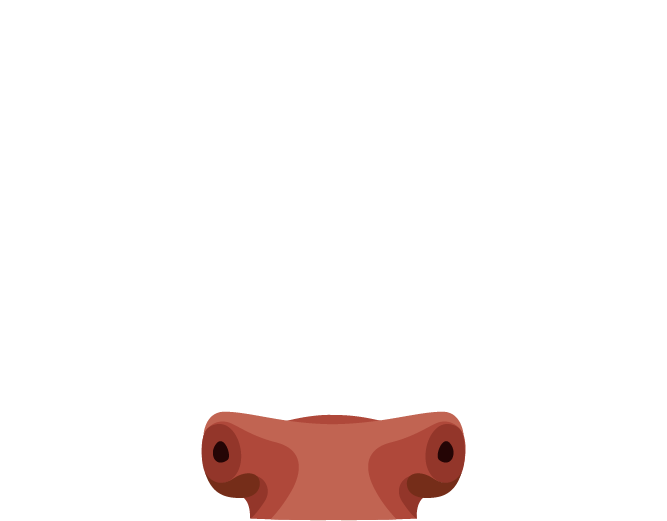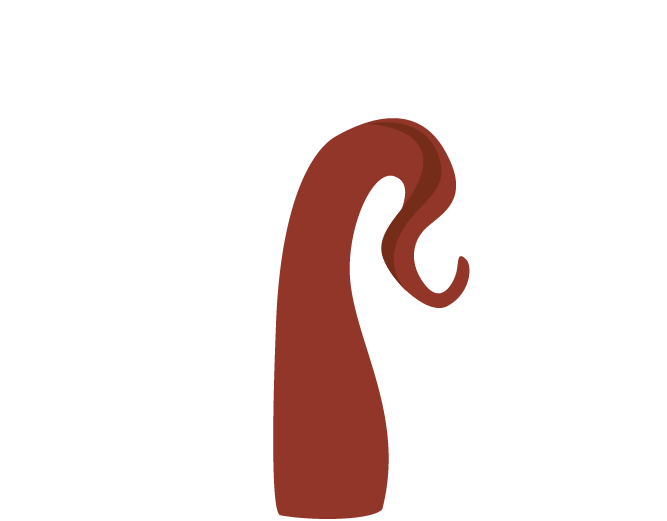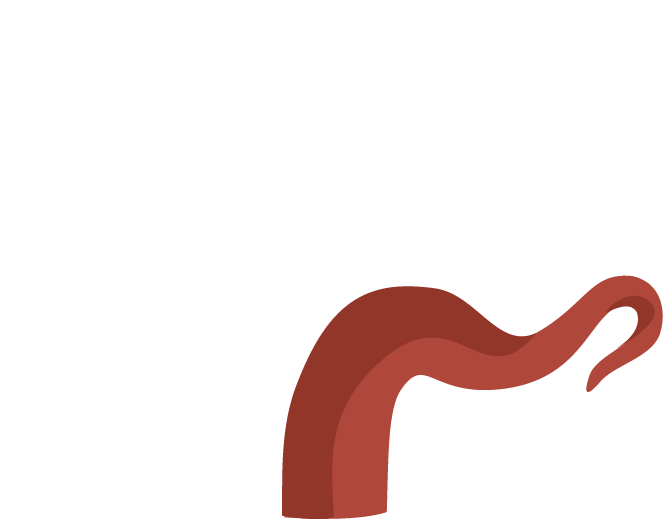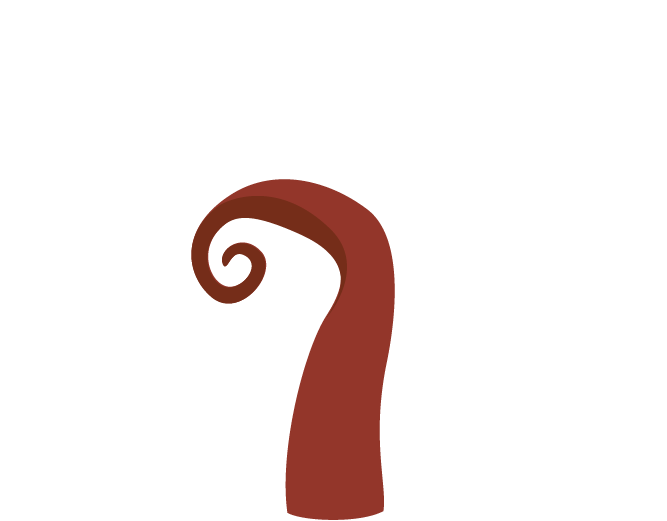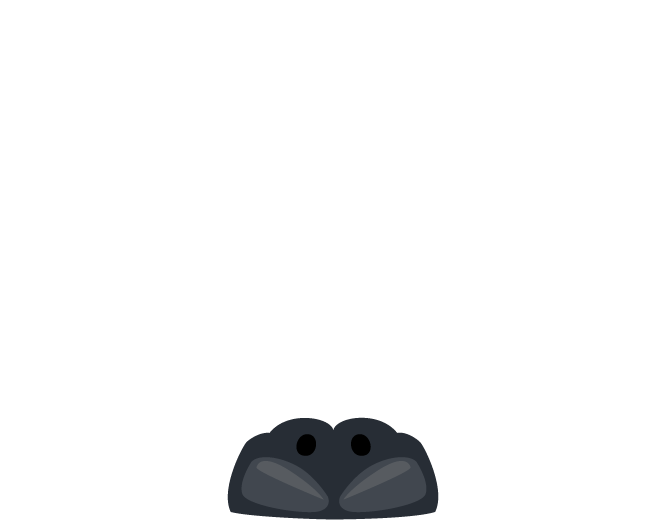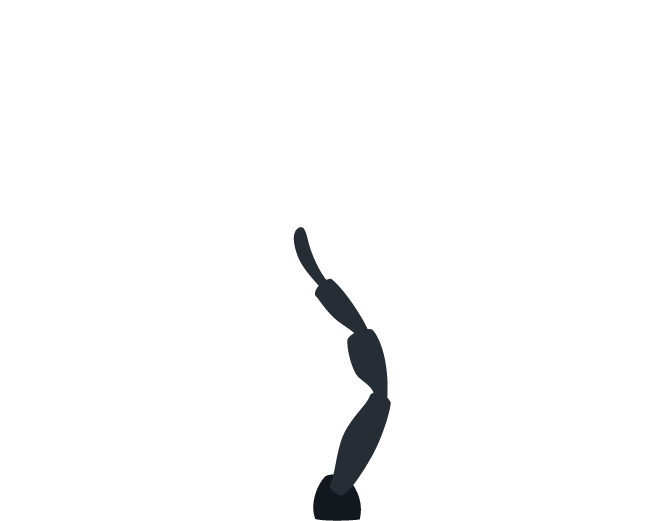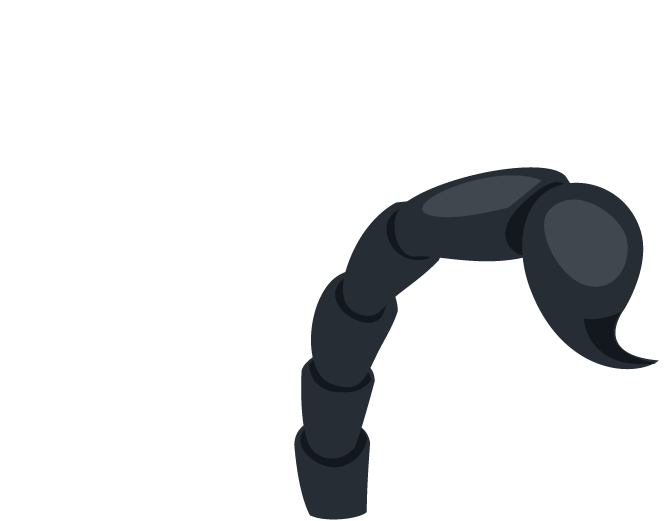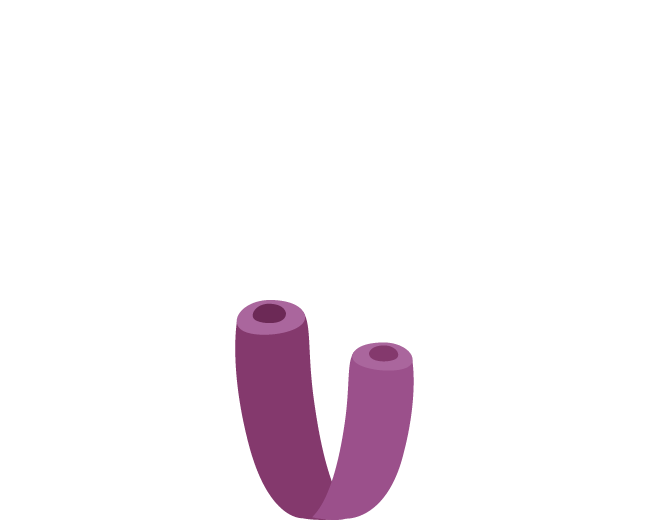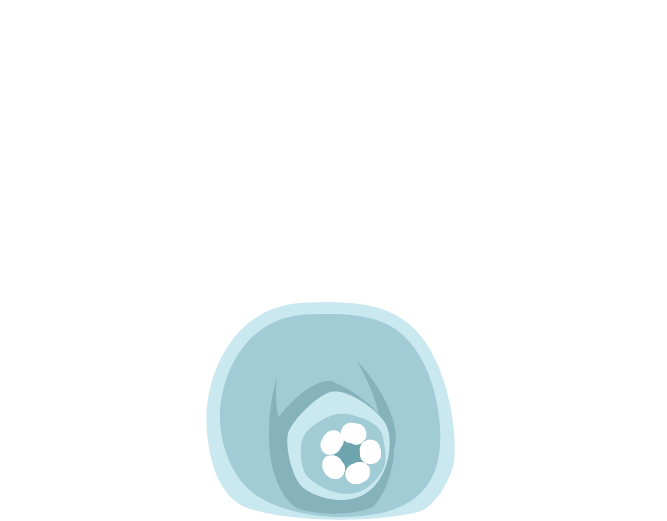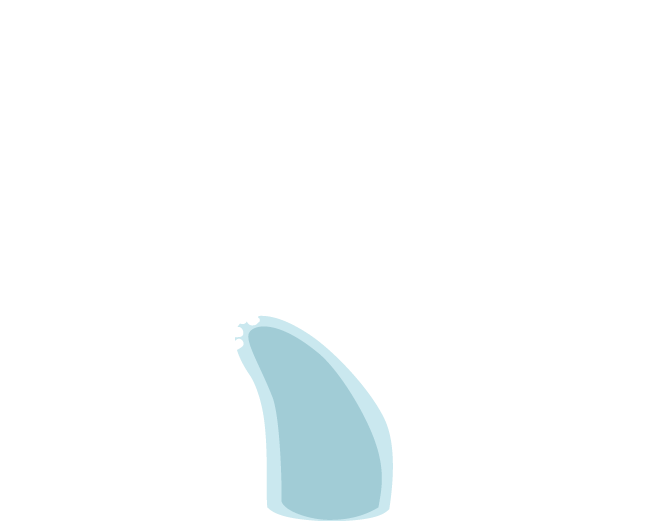Animal Info
Anglerfish | Emperor scorpion | Fruit fly | Gila monster | Human | Nematode | Octopus | Stove-pipe sponge | Tardigrade | Zebra finch

Anglerfish
Bufoceratias shaoi
A double anglerfish that has a light lure (“esca”) on its back near the front of its spine, and has another natural light on the dorsal fin (the fin along the spine). The light is caused by bacteria. Males are very small compared to the females, a trait called sexual dimorphism. If a male can attach to the body of a female, that is where he will spend the rest of his life.
- Bony fish (Osteichthyes): a group of fish that have skeletons mainly made of bone tissue, rather than cartilage.
- Brain: a brain and a series of nerves throughout the body control function and movement.
- Closed circulation: a system of circulation in which blood is pumped by a heart and travels through closed vessels within the body.
- Ectotherm: does not produce own body heat; depends on environment to change body temperature.
- Endoskeleton: an inner skeleton that needs structural attachment points and contrasting muscles to work properly.
- Gill gas exchange: a respiratory system in which water (which carries oxygen) is driven across gills, the place where oxygen and carbon dioxide are exchanged.
- Low metabolism: doesn’t use much energy to maintain body function.
- Oviparous: egg-laying.
- Sexual: an organism that reproduces by exchanging reproductive cells with another organism.
- Vertebrate: the major group of animals that have a backbone (spinal column).

Emperor scorpion
Pandinus imperator
One of the largest scorpions, the emperor scorpion lives for over 6 years. Scorpions are eight-legged invertebrates and arachnids (like spiders) that have venomous stingers at the end of their tails. Venom defends against attack, but may be used to kill prey. Many species have large pincers (claws) to rip apart small prey. Most scorpions are not a serious danger for humans. Scorpions glow under ultraviolet light, due to chemicals in their waxy skin (cuticle).
- Arachnid: an organism with eight legs that have joints (like your elbows and knees).
- Book lungs: a lung structure in which gas exchange surfaces are in a cavity that has a hole that allows air in. There is no movement of the lungs, so gas exchange is passive.
- Ectotherm: does not produce own body heat; depends on environment to change body temperature.
- Exoskeleton: a hard outer layer that protects the body.
- Invertebrate: an animal that lacks a backbone (spinal column).
- Low metabolism: doesn’t use much energy to maintain body function.
- Nerve cords: a brain connects to two main nerve cords located along the belly side of the body, with a series of nerves that connect throughout the body to control function and movement.
- Open circulation with heart: a system of circulation in which blood is pumped by a heart but travels freely throughout the body, and tissues are surrounded by slowly moving blood. There are no blood or fluid vessels.
- Ovoviparous: an organism whose young develops within eggs, but eggs are held within the mother’s body until hatch.
- Sexual: an organism that reproduces by exchanging reproductive cells with another organism.

Fruit fly
Drosophila melanogaster
A small fly, which is an insect that has a single pair of wings, a moveable head, and compound eyes (which have thousands of individual light-sensing units). The fruit fly is one of the most commonly used animals in genetics research, because of how quickly they breed and because they share many genes with humans. Once hatched, a fruit fly can begin mating within ten days.
- Ectotherm: does not produce own body heat; depends on environment to change body temperature.
- Exoskeleton: a hard outer layer that protects the body.
- Insect: a group of animals with six legs, external mouthparts, and an external skeleton made of a material called chitin.
- Invertebrate: an animal that lacks a backbone (spinal column).
- Low metabolism: doesn’t use much energy to maintain body function.
- Nerve cords: a brain connects to two main nerve cords located along the belly side of the body, with a series of nerves that connect throughout the body to control function and movement.
- Open circulation with heart: a system of circulation in which blood is pumped by a heart but travels freely throughout the body, and tissues are surrounded by slowly moving blood. There are no blood or fluid vessels.
- Oviparous: egg-laying.
- Sexual: an organism that reproduces by exchanging reproductive cells with another organism.
- Tracheae: breathes through a series of tubes (called tracheae) that enter the side of the body and deliver oxygen directly to cells through diffusion.

Gila monster
Heloderma suspectum
A medium-sized venomous lizard that feeds on young birds, mammals, and lizards. Bright orange and black coloration serve as a warning sign to potential attackers. Living in the harsh desert, they use their bladders to hold water that they can absorb during the hot summer months and they tolerate some dehydration. A protein in Gila monster venom has been used to develop a new treatment for diabetes.
- Brain: a brain and a series of nerves throughout the body control function and movement.
- Closed circulation: a system of circulation in which blood is pumped by a heart and travels through closed vessels within the body.
- Ectotherm: does not produce own body heat; depends on environment to change body temperature.
- Endoskeleton: an inner skeleton that needs structural attachment points and contrasting muscles to work properly.
- Lizard: a reptile with four legs (though some may be underdeveloped), external ears, and a special movable bone in their skulls.
- Low metabolism: doesn’t use much energy to maintain body function.
- Oviparous: egg-laying.
- Sexual: an organism that reproduces by exchanging reproductive cells with another organism.
- Simple lungs: simple sac lungs deliver oxygen to blood, which carries it through series of vessels to tissues.
- Vertebrate: the major group of animals that have a backbone (spinal column).

Human
Homo sapiens
A great ape that is adapted to walk on two feet and use complex tools. Lives on every continent in the world, and some even live off planet, in orbit around the Earth. Humans work cooperatively in social groups and have large brains, two factors which may have led to the great success of this species. Great capacity for love, hate, and giving things silly names.
- Brain: a brain and a series of nerves throughout the body control function and movement.
- Closed circulation: a system of circulation in which blood is pumped by a heart and travels through closed vessels within the body.
- Complex lungs: lungs deliver oxygen to blood, which carries it through series of vessels to tissues.
- Endoskeleton: an inner skeleton that needs structural attachment points and contrasting muscles to work properly.
- Endotherm: creates own body heat.
- High metabolism: requires high levels of energy to maintain body function.
- Live bearing: an animal who gives birth to live young.
- Mammal: a group of animals that have fur and in which females create milk for young in mammary glands.
- Sexual: an organism that reproduces by exchanging reproductive cells with another organism.
- Vertebrate: the major group of animals that have a backbone (spinal column).

Nematode
Caenorhabditis elegans
A roundworm about 1 millimeter in length that lives in moist soils. Doesn’t have a breathing or circulation system, so its body parts are essentially skin, intestines, and reproductive organs. One of the simplest animals to have a separate mouth and anus. This species was the first animal to have all of its genes (its whole genome) mapped out, or sequenced.
- Diffusion: a system that relies on passive movement of molecules to get oxygen in the body and to cells and to remove carbon dioxide from the cells and the body.
- Ectotherm: does not produce own body heat; depends on environment to change body temperature.
- Hermaphrodite: an organism that has reproductive organs from more than one sex.
- Hydrostatic supporting skeleton: body support is created by fluid pressure within the body. The fluid cavity is surrounded by muscles that can move body parts.
- Invertebrate: an animal that lacks a backbone (spinal column).
- Low metabolism: doesn’t use much energy to maintain body function.
- Open circulation: a system of circulation in which blood-like fluid travels freely throughout the body, and tissues are surrounded by slowly moving blood. There are no blood vessels.
- Oviparous: egg-laying.
- Sexual and asexual: an organism that can reproduce in multiple ways, either by exchanging reproductive cells with another organism, or by using only its own cells.
- Small world network: a nervous system that relies heavily on local-control nerve networks, and in which nerves may not fire in the most common way (called an action potential).
- Unsegmented: a type of worm whose entire body is symmetrical on each side, but who does not have repeating segments along the length of its body.

Octopus
Octopus vulgaris
An eight-armed invertebrate known for being intelligent and sneaky. Octopods can solve many tough puzzles made by scientists and can squeeze their boneless bodies through small holes. Their skin can change colors to blend in when hiding from a predator, or to attract the attention of a mate. When danger is near, they can eject ink from a special sac to hide themselves and escape from enemies.
- Brain: a brain and a series of nerves throughout the body control function and movement.
- Cephalopod: a type of mollusc that has a symmetrical body, a head, and several arms or tentacles with suckers.
- Closed circulation: a system of circulation in which blood is pumped by a heart and travels through closed vessels within the body.
- Ectotherm: does not produce own body heat; depends on environment to change body temperature.
- Gill gas exchange: a respiratory system in which water (which carries oxygen) is driven across gills, the place where oxygen and carbon dioxide are exchanged.
- Hydrostatic supporting skeleton: body support is created by fluid pressure within the body. The fluid cavity is surrounded by muscles that can move body parts.
- Invertebrate: an animal that lacks a backbone (spinal column).
- Low metabolism: doesn’t use much energy to maintain body function.
- Marine: an animal that lives in salty water, as is found in the world’s seas and oceans.
- Mollusc: an invertebrate that has a body wall and a body cavity used for breathing and to get rid of body wastes.
- Oviparous: egg-laying.
- Sexual: an organism that reproduces by exchanging reproductive cells with another organism.

Stove-pipe sponge
Aplysina archeri
If it has no organs, is it an animal? In the case of the sponges, it is. These animals literally sponge up nutrients floating in the water around them. In some species, they can reproduce by “budding”, or dropping pieces of themselves off to grow into another sponge, in others, they reproduce sexually. The larvae will swim to a new site, where they eventually cling to the ocean floor for their adult life.
- Budding: an animal that reproduces by growing and breaking off a piece of its own body.
- Diffusion: a system that relies on passive movement of molecules to get oxygen in the body and to cells and to remove carbon dioxide from the cells and the body.
- Ectotherm: does not produce own body heat; depends on environment to change body temperature.
- Invertebrate: an animal that lacks a backbone (spinal column).
- No circulation system: lacks a closed system with fluids.
- No nerves: no brain or nerve cells, but local responses to touch.
- Poriferan: a group of simple multi-celled organisms filled with holes (or “pores”) where water can filter through their bodies.
- Sessile: an animal that spends all or most of its life anchored to a single spot. A small number of sponges can move with millions of tiny feet called pinacocytes.
- Spicule skeleton: a type of endoskeleton made of a small protein fibers.
- Very low metabolism: doesn’t use much energy to maintain body function.

Tardigrade
Eutardigrada spp.
Some of the smallest animals to crawl the earth, tardigrades are only about 0.5 millimeters long, but have eight tiny legs with tiny claws. These “water bears” can survive temperatures almost as cold as absolute zero (-272°,C) and as hot as 150°,C, pressures that are six times as high as those in the deep ocean, dehydration, and radiation. To eat, they use their piercing mouthpiece, or “stylet,” to suck juices from plant or animal cells.
- Diffusion: a system that relies on passive movement of molecules to get oxygen in the body and to cells and to remove carbon dioxide from the cells and the body.
- Ectotherm: does not produce own body heat; depends on environment to change body temperature.
- Ganglia nerve cords: balls of nerve cells support the nerve cord, with a series of nerves that connect throughout the body to control function and movement.
- Hydrostatic skeleton: body support is created by fluid pressure within tissues.
- Invertebrate: an animal that lacks a backbone (spinal column).
- Micro-animal: an animal so small it can only be seen with a microscope- they differ from animal plankton (zooplankton) because micro-animals can control their own movement.
- Open circulation: a system of circulation in which blood-like fluid travels freely throughout the body, and tissues are surrounded by slowly moving blood. There are no blood vessels.
- Oviparous: egg-laying.
- Sexual and asexual: an organism that can reproduce in multiple ways, either by exchanging reproductive cells with another organism, or by using only its own cells.
- Very low metabolism: doesn’t use much energy to maintain body function.

Zebra finch
Taeniopygia guttata
A seed-eating bird that is a common pet because they are easy to care for. In the wild, this native Australian desert bird finds scarce water sources, and can break down its own fat and proteins to make water to survive a drought. They are sexually dichromatic, meaning one sex is more colorful than the other: the male is more colorful, with brownish-red cheeks, a black-grey striped breast, and a spotted band on each side.
- Aves: a group of animals that have feathers, wings, and some hollow bones.
- Brain: a brain and a series of nerves throughout the body control function and movement.
- Closed circulation: a system of circulation in which blood is pumped by a heart and travels through closed vessels within the body.
- Complex lungs: lungs deliver oxygen to blood, which carries it through series of vessels to tissues.
- Endoskeleton: an inner skeleton that needs structural attachment points and contrasting muscles to work properly.
- Endotherm: creates own body heat.
- High metabolism: requires high levels of energy to maintain body function.
- Oviparous: egg-laying.
- Sexual: an organism that reproduces by exchanging reproductive cells with another organism.
- Vertebrate: the major group of animals that have a backbone (spinal column).
To see the list of all terms and definitions, visit the Library.


























